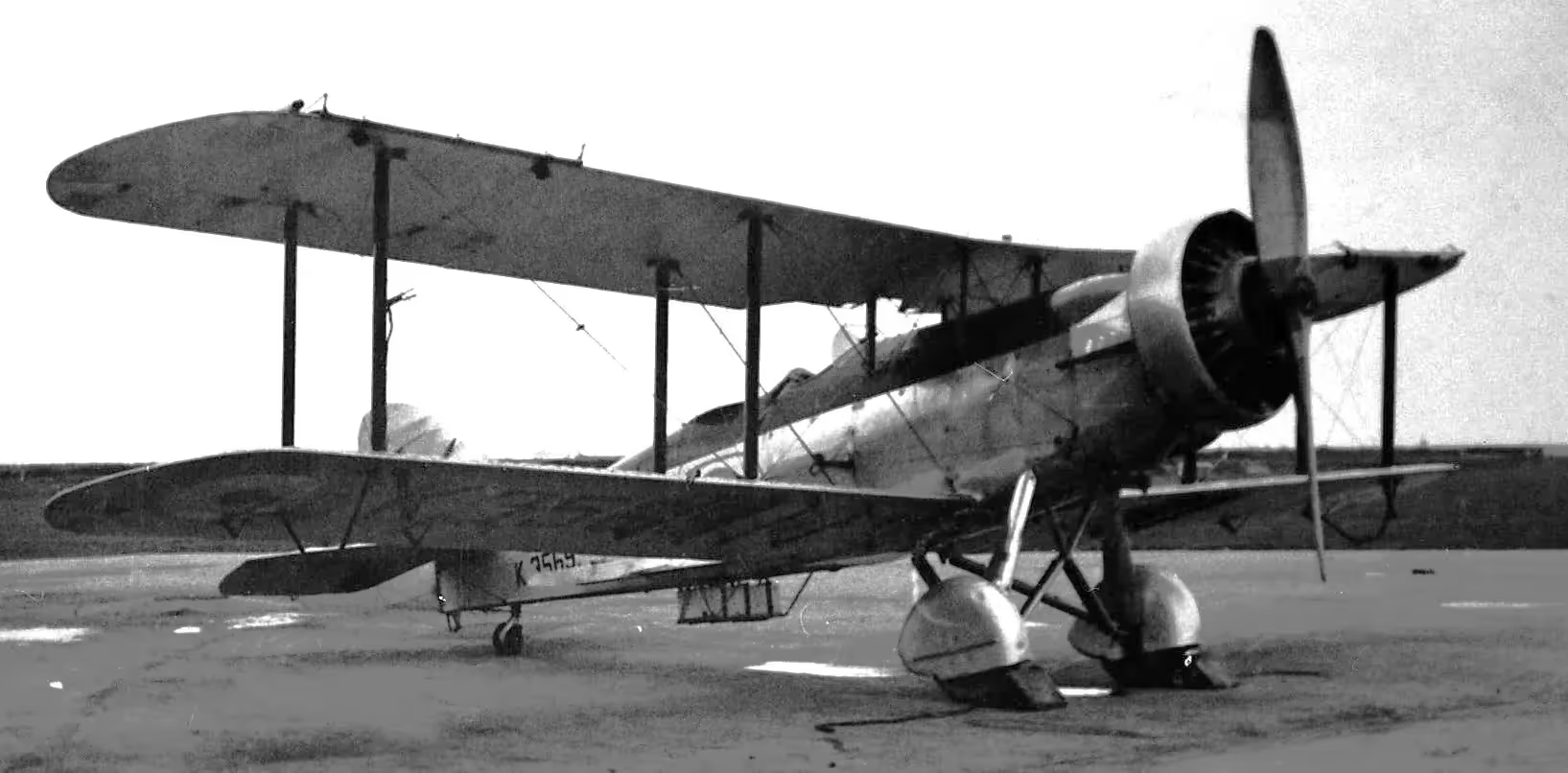Canadian Warplanes 1: Westland Wallace
Westland Wallace

(Felis domestica Photo)
The Westland Wallace was a British two-seat, general-purpose biplane of the Royal Air Force, developed by Westland as a follow-on to their successful Wapiti. As the last of the interwar general purpose biplanes, it was used by a number of frontline and Auxiliary Air Force Squadrons. Although the pace of aeronautical development caused its rapid replacement in frontline service, its useful life was extended into the Second World War with many being converted into target tugs and wireless trainers. In 1933 a Westland Wallace became the first aircraft to fly over Everest, as part of the Houston-Mount Everest Flight Expedition.
In 1931, Westland produced the PV-6, a private-venture development of its successful Wapiti. This updated aircraft embodied a number of improvements including a lengthened fuselage, brakes and wheel spats on the undercarriage and a new engine. By this time both the appearance and performance differed considerably from the standard Wapiti, so the company designated it the PV6 Wallace. Compared with the earlier Wapiti, the Wallace was 20 inches (0.5 m) longer, incorporated an improved undercarriage and was powered by a 655 hp (488 kW) Bristol Pegasus IV engine. The first batches of Mk. I Wallaces were conversions of Wapitis, a total of 68 powered by 570 bhp (425 kW) Pegasus IIM3 engines. Westland designed an improved version, the Mk II which was fitted with a more powerful engine and the then-novel idea of an enclosed canopy over both crew positions. This offered greater comfort for the crew and improved the rear gunner's aim by protecting him from the slipstream.
The first RAF casualties of WW2 occurred when a Wallace of the RAF Observer School (K6028) crashed at Bennachie, near Aberdeen. Pilot Officer Ellard Alexander Cummings (23) from Ottawa, Canada and Leading Aircraftman Alexander Ronald Renfrew Stewart (24) both lost their lives.
When withdrawn from the general purpose role, many Wallaces were converted into target tugs. A total of 83 Wallaces remained in service at the beginning of the Second World War. The last were withdrawn in 1943. (Wikipedia)
Canadian Pilot Officer Ellard Alexander Cummings, serving in the RAF was killed in flying accident (KIFA) in a Wallace (Serial No. K6028). (CASPIR)

(ww2aircraftnet Photo)
Westland Wallace Mk. II, coded HP-K, general-purpose biplane in service as a target-tug.

(avionslegendaires.net Photo)
Westland Wallace (Serial No. K4019)

(avionslegendaires.net Photo)
Westland Wallace.

(avionslegendaires.net Photo)
Westland Wallace (Serial No. K6072).

(avionslegendaires.net Photo)
Westland Wallace (Serial No. K6020).

(avionslegendaires.net Photo)
Westland Wallace.





